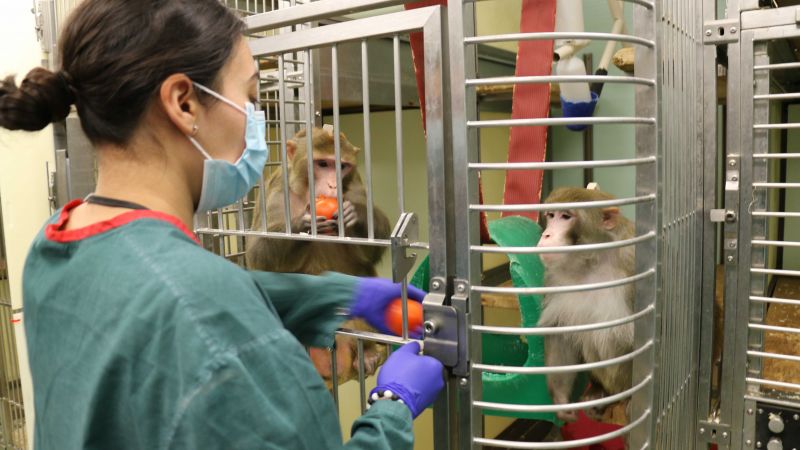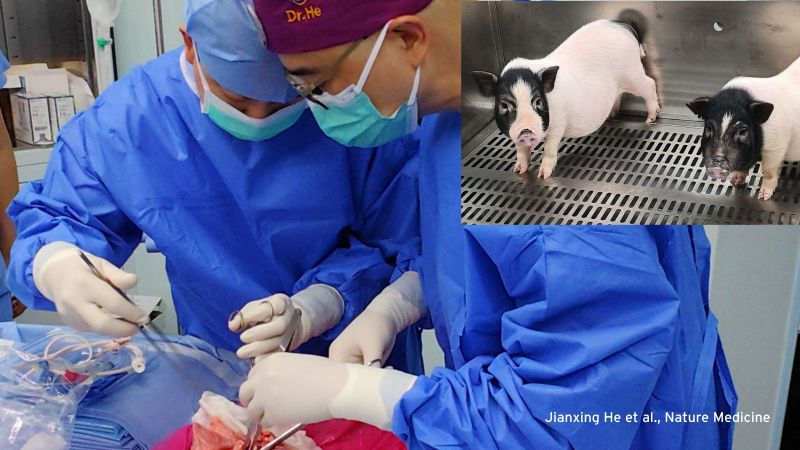
 Xenotransplantation: Hearts made in Munich
Xenotransplantation: Hearts made in Munich
Could organs explanted from other mammals save human lives someday? A new study shows that genetically modified pig hearts developed by US and Ludwig-Maximilians-Universitaet (LMU) in Munich researchers can survive for more than up to 2½ years when transplanted into baboons.
International Marine Conservation negotiations start
In a study published last month, marine scientists Callum Roberts, Bethan O’Leary and their colleagues at the University of York, UK, conclude that the proposed 10% UN marine conservation target is much too low. On the basis of a review of 144 studies that assessed the adequacy of the UN target, they estimate that more than 30% of the ocean must be protected to achieve goals such as protecting biodiversity and minimizing the risk that fish populations will collapse (B. C. O’Leary et al. Conserv. Lett. http://doi.org/bdxw; 2016). But it would be near impossible to set aside this much-larger portion without being able to create MPAs in the high seas, notes Roberts. “These negotiations over the next two years are going to be vitally important,” he says.
http://www.nature.com/…/negotiations-to-tame-marine-wild-we…
Nerve terminal nanofilaments control brain signalling
State-of-the-art electron microscopy reveals the large-scale organization of the proteins that regulate neurotransmitter release
Scar tissue might help nerve re-growth
For decades, it was thought that scar-forming cells called astrocytes were responsible for blocking neuronal regrowth across the level of spinal cord injury, but recent findings challenge this idea. According to a new mouse study, astrocyte scars may actually be required for repair and regrowth following spinal cord injury.
http://www.nih.gov/…/new-role-identified-scars-site-injured…
Study using mice reveals new way lungs respond in asthma attacks
Scientists at the University of Leicester have identified a new biochemical process that controls how air enters and leaves the lungs during normal lung function and during asthma that could lead to new treatments for the disease. By disrupting these biochemical pathways in a mouse model of asthma the scientists discovered that they could prevent airway narrowing and maintain normal lung function. 5.4 million people in the UK suffer with asthma, with the disease affecting one in every 11 people.
http://www2.le.ac.uk/offices/press/press-releases/2016/april/study-reveals-new-way-lungs-respond-in-asthma-attacks
Orkney red deer brought by boat from Europe?
The red deer of the outer Scottish islands are genetically distinct to those on the mainland. Could they have been brought directly from Europe by our ancestors? It is one theory proposed but I'm more inclined to believe that they are a relict population from the first Red deer to invade these isles after the ice receded who were then replaced on the mainland by further red deer immigration, the second theory suggested.
http://www.bbc.co.uk/news/science-environment-35970195
https://www.theguardian.com/science/2016/apr/06/riddle-of-the-red-deer-orkney-deer-arrived-by-neolithic-ship-study-reveals
Last edited: 8 March 2022 16:35



